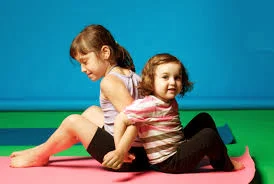Benefits of Exercise Children
Benefits Of Exercise For Children
When most adults think about exercise, they imagine working out in the gym on a treadmill or lifting weights.
But for Children, exercise means playing and being physically active. Children exercise when they have gym class at school, during recess, at dance class or soccer practice, while riding bikes, or when playing tag.
The Many Benefits of Exercise For Children
Everyone can benefit from regular exercise. Children who are active will:
- have stronger muscles and bones
- have a leaner body because exercise helps control body fat
- be less likely to become overweight
- decrease the risk of developing type 2 diabetes
- possibly lower blood pressure and blood cholesterol levels
- have a better outlook on life
Besides enjoying the health benefits of regular exercise, Children who are physically fit sleep better and are better able to handle physical and emotional challenges — from running to catch a bus to studying for a test.
The Three Elements of Fitness
If you've ever watched Children on a playground, you've seen the three elements of fitness in action when they:
- run away from theChildren who's "it" (endurance)
- cross the monkey bars (strength)
- bend down to tie their shoes (flexibility)
Parents should encourage their Children to do a variety of activities so that they can work on all three elements.
Endurance is developed when Children regularly engage in aerobic activity. During aerobic exercise, the heart beats faster and a person breathes harder. When done regularly and for extended periods of time, aerobic activity strengthens the heart and improves the body's ability to deliver oxygen to all its cells.
Aerobic exercise can be fun for both adults and Children. Examples of aerobic activities include:
- basketball
- bicycling
- ice-skating
- inline skating
- soccer
- swimming
- tennis
- walking
- jogging
- running
Improving strength doesn't have to mean lifting weights. Although some Children benefit from weightlifting, it should be done under the supervision of an experienced adult who works with them.
But most Children don't need a formal weight-training program to be strong. Push-ups, stomach crunches, pull-ups, and other exercises help tone and strengthen muscles. Children also incorporate strength activities in their play when they climb, do a handstand, or wrestle.
Stretching exercises help improve flexibility, allowing muscles and joints to bend and move easily through their full range of motion. Children look for opportunities every day to stretch when they try to get a toy just out of reach, practice a split, or do a cartwheel.







0 comments:
Post a Comment